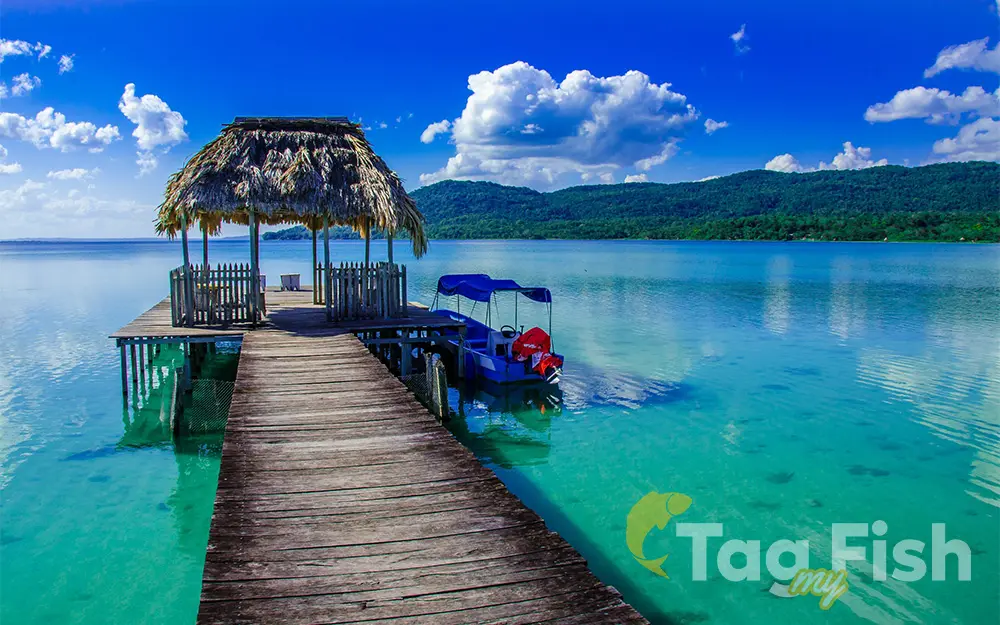Lake Peten Itza

General data
- Name: Lake Peten Itza
- Water system: Gulf of Mexico
- Water type: Natural lake
- Progression: Gulf of Mexico -> Atlantic Ocean -> Planet Earth
- Climates: Tropical
- Continents: North America
- Countries: Guatemala
Lake Petén Itzá is a lake in the northern Petén Department in Guatemala. It is the third largest lake in Guatemala, after Lake Izabal and Lake Atitlán. It has an area of 99 km2 (38 sq mi), and is some 32 km (20 mi) long and 5 km (3.1 mi) wide. Its maximum depth is 160 m (520 ft). The lake area presents high levels of migration, due to the existence of natural resources such as wood, chewing gum, oil, and agricultural and pasture activities. Because of its archaeological richness, around 150,000 tourists pass through this region yearly. The city of Flores, the capital of the Petén Department, lies on an island near its southern shore. Several streams flow into Lake Petén Itzá, but it has no surface outflow. Although it loses water mostly by evaporation, it is not a salt lake. There are at least 27 Maya sites around this lake and the archaeological remains of Tayasal, located across the lake on a peninsula close to the former Itza Maya capital, the last to be conquered in Mesoamerica in 1697. Fauna This lake and its surroundings have more than 100 important indigenous species such as the cichlid fish Mayaheros urophthalmus, Petenia splendida and Vieja melanurus, the endemic Poecilia petenensis, crocodiles (Crocodylus moreletii and Crocodylus acutus), jaguars (Panthera onca), pumas (Puma concolor), white-tailed deer (Odocoileus virginianus), Central American red brocket (Mazama temama), and several bird species, including parrots such as macaws, and toucans. On its northeast shore is the Cerro Cahui Protected Biotope, a natural reserve for butterflies that covers 1,600-acre (6.5 km2) and is home to toucans, Geoffroys spider monkey (Ateles geoffroyi), Guatemalan black howler monkeys (Alouatta pigra), and many other rainforest species.

 English
English
 Spanish
Spanish
 German
German
 French
French
 Serbian
Serbian
 Russian
Russian

